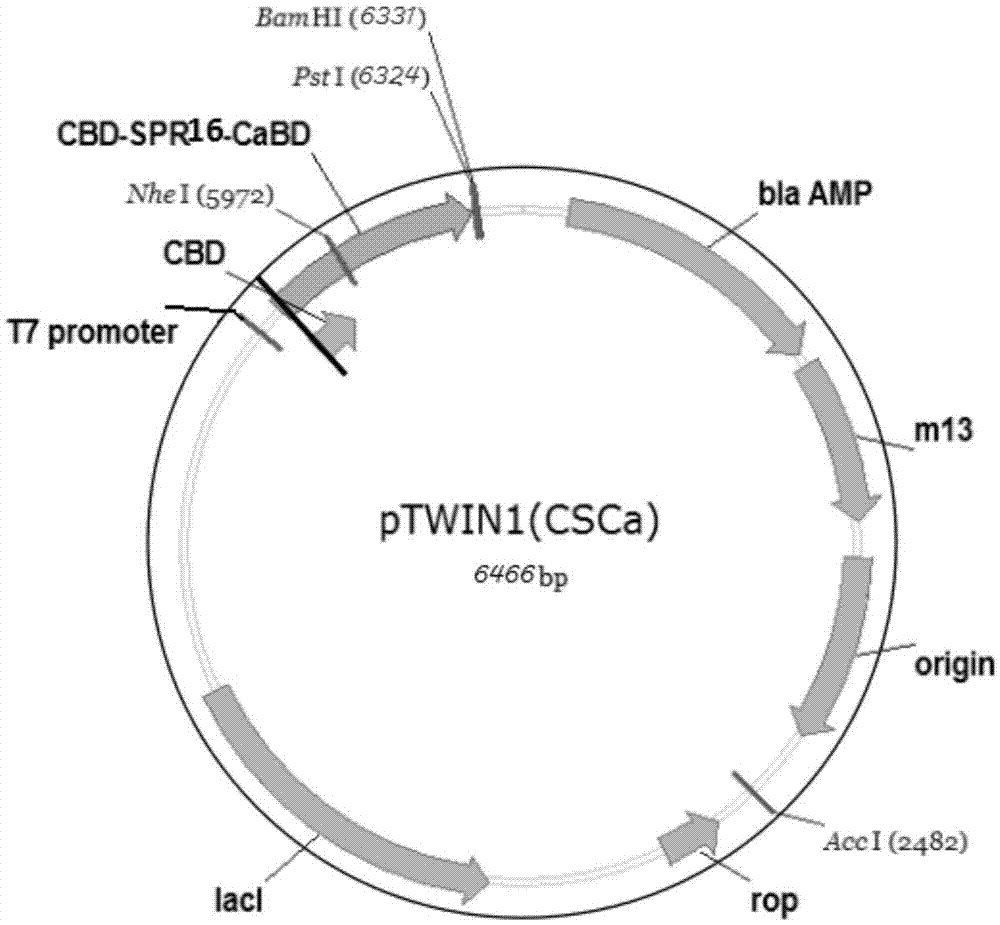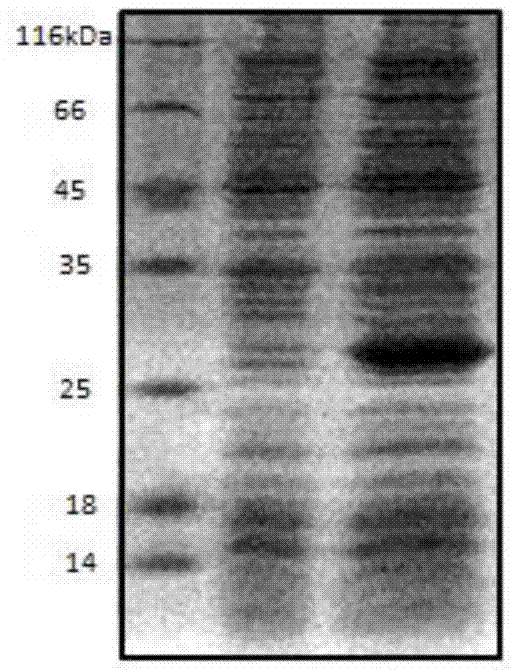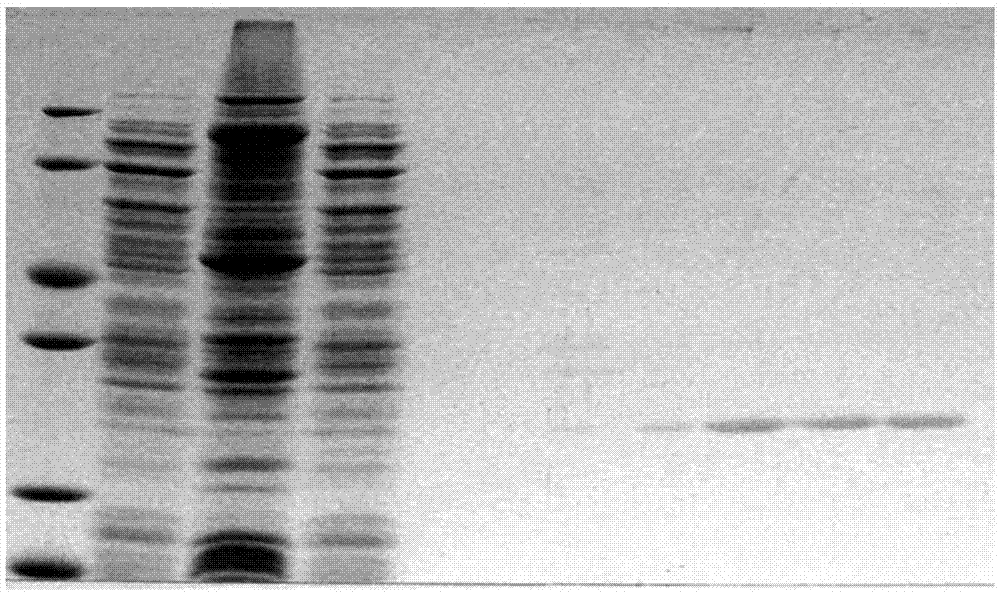Shell nacre-like recombinant protein CSCa and method for regulating and preparing calcium carbonate by using same
A technology of recombinant protein and nacre, applied in the direction of calcium carbonate/strontium/barium, recombinant DNA technology, chemical instruments and methods, etc., can solve the problem of limited single protein, achieve low preparation cost, simple preparation method, understand mineralization Mechanism Facilitated Effects
- Summary
- Abstract
- Description
- Claims
- Application Information
AI Technical Summary
Problems solved by technology
Method used
Image
Examples
Embodiment 1
[0025] Construction and expression of embodiment 1 recombinant protein CSCa
[0026] Experimental design The recombinant protein CSCa is composed of three fragments: chitin binding region, silk protein repeat sequence, and calcium ion binding region. The chitin-binding sequence is derived from the CBD sequence on the carrier plasmid PTWIN1, and the base sequence is shown in SEQ ID NO.4; the silk protein repeat sequence is derived from the silk protein of Bombyx mori, and the base sequence of the silk protein repeat sequence is shown in SEQ ID NO.5 ; The calcium ion binding sequence is derived from the calcium binding region of MS17 protein, and the base sequence is shown in SEQ ID NO.6.
[0027] First, the target gene fragment is amplified by PCR operation, and then the vector plasmid is digested, and then the vector plasmid and the PCR product are ligated overnight with DNA ligase, and finally the ligated product is transformed into competent cells, and the DNA electrophoresi...
Embodiment 2
[0029] Purification and dialysis of embodiment 2 recombinant protein CSCa
[0030]Wash 1.5ml chitin three times with LysisBuffer (Tris20mM, NaCl0.5M, EDTA1mM, Tween-201ml) and transfer to the column for use. After the collected cells were dissolved on ice, LysisBuffer (10mlLB / 100ml bacteria) was added in proportion, and then the cells were crushed three times with a high-pressure crusher. After centrifugation for 30 minutes (4°C, 12000 rpm / min), keep the supernatant. Add 5ml LB to the precipitate and leave it for protein electrophoresis. Pour the supernatant into the column to combine with chitin. The flow rate should be slow. Repeat the operation of the column to fully combine the protein and chitin. The total time for the column is about 4 hours. The process of the column is carried out in a low temperature environment , The supernatant after passing through the column needs to be placed on ice, and 30ul of the supernatant that passes through the chitin for the last time i...
Embodiment 3
[0032] Embodiment 3 recombinant protein CSCa regulates and prepares calcium carbonate
[0033] First wash 1-2ml of chitin with LysisBuffer (Tris 20mM, NaCl 0.5M, EDTA 1mM, Tween-201ml), mix the washed chitin with the recombinant protein CSCa solution, and combine overnight at 4°C. The next day, transfer the protein-bound chitin to a beaker and add NaHCO 3 Solution and deionized water, stir well and adjust to the desired pH, add CaCl 2 2H 2 O solution, where HCO 3 - ions and Ca 2+ The concentration of ions in the reaction system was 10mmol / L. After stirring for the designed time, the precipitate was collected by standing, washed with deionized water for 3 times, transferred to a glass dish, and freeze-dried to obtain a powder.
[0034] In this example, the effects of different protein contents, different mineralization time, and different mineralization initial pH on the mineralization results are designed.
[0035] (1) Protein content 2% (that is, 100ml mineralization re...
PUM
 Login to View More
Login to View More Abstract
Description
Claims
Application Information
 Login to View More
Login to View More - R&D
- Intellectual Property
- Life Sciences
- Materials
- Tech Scout
- Unparalleled Data Quality
- Higher Quality Content
- 60% Fewer Hallucinations
Browse by: Latest US Patents, China's latest patents, Technical Efficacy Thesaurus, Application Domain, Technology Topic, Popular Technical Reports.
© 2025 PatSnap. All rights reserved.Legal|Privacy policy|Modern Slavery Act Transparency Statement|Sitemap|About US| Contact US: help@patsnap.com



